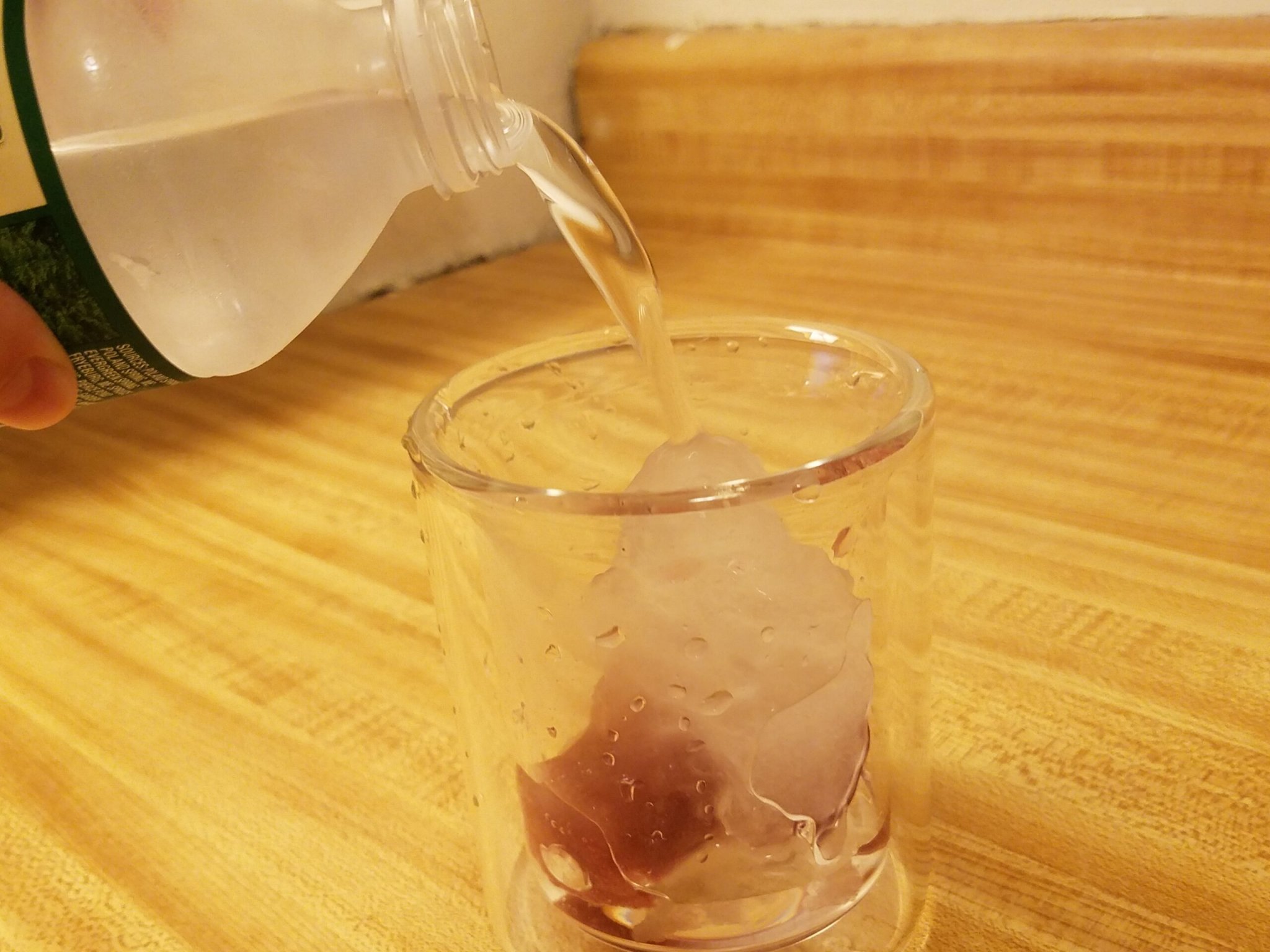


Sound the alarms: water doesn’t freeze at 0°C. Or at least, not always. You can actually supercool water—and most liquids—below its freezing point! In fact, some scientists once recorded pure water down at -46°C, at least for a fraction of a second before the water flash froze.
Now it sounds crazy, but liquid doesn’t automatically become solid at its freezing point. If you think about it, water and ice are quite different. They have different structures. Ice is even eight percent less dense than water. (Water is the only compound whose solid form is less dense than its liquid, says chemist Valeria Molinero of the University of Utah. She also notes that supercooled water is actually 20 percent less dense than room temperature liquid water.)
It takes a shake-up of the status quo to kickstart the process of turning water into ice. In the absence of an impurity, water can just keep getting colder and colder. For reference, your freezer is probably around -18°C.
But add in one stray speck of dust, an ice cube, a scratch in the liquid container, or even an accidental jostle, and the whole thing flash freezes before your eyes.
This phenomenon, called supercooling or undercooling, can be your next party trick! With some planning, prepare to astound friends and guests with your magical powers. You’re going to transform water into ice before their very eyes. Or if you’re over 21, a liquid beer into a beer slushie!
Directions:

- Place a few bottles of distilled water or clear beer in an undisturbed section of the freezer.
* For beers, you want one free of obvious particles. Ideally the beer is also in a clear bottle so that you can observe it. Suggested: Corona. * Because bubbles can spark crystallization, consider opening the beer just a little bit before you pop it in the freezer to relieve pressure. This way when you try to open the bottle later, the sudden bubbles won’t cause the beer to freeze before you get to show it off. * As a reference, place a bottle of tap water into the freezer as well. When the tap water freezes, you’ll know that the distilled water is ready. The beer may take a little longer to supercool because it contains alcohol. However, you can still test one of the beer bottles just in case. 2. All told, this should take around two hours, but it depends on the strength of your freezer. After an hour and a half, check back in every 15 minutes. Remove the bottles from the freezer when they are ready. Remember that frozen beer bottles can explode, so take care.

- For the beer slushie, place an ice cube in a large bowl, and then pour the beer on top of the ice cube. It should transform from a liquid to a slush before your eyes.

- As for the bottle of water, there are multiple ways to show it off:
* Do the same as with the beer slushie. The liquid should transform into ice as it hits the ice cube. * Take the bottle out of the freezer. Tap it on the table or smack it with your hand to watch the ice appear seemingly out of nowhere. * Pour the water into a polystyrene cup (you can also prepare this ahead of time by simply supercooling the water in the cup covered with cling film instead of in a bottle). Dangle or drop an ice cube into the water and watch the ice crystals build around the cube.
Warning: don’t drink the supercooled liquid. “It might break your teeth off because it’ll freeze in between two teeth and push them apart,” warns Tom Hill of Colorado State University. The beer slushie is safe to eat, though.
Why does this happen? Transitioning from liquid to ice usually requires a nucleating agent. These can be the aforementioned ice cube, a bit of dust, minerals in the water, or even a scratch inside the bottle. Without a nucleating agent, however, it’s just not energetically favorable for a small crystal of ice to grow larger, says Molinero. Instead, the crystal of ice will just change back into liquid.
However, that balance of liquid and solid changes in the presence of a dust speck or mineral in the liquid. The surface of this object starts to catalyze the transition from liquid to solid. Molecules of water bond to surface. This starts a chain reaction as yet more molecules bond to this growing mass until the water in the bottle has become solid.
This is why tap water and cloudy beers will not work for this magic trick. They’re too likely to freeze instead of supercool.
However, in both supercooling liquids and in regular freezing liquids, crystallization begins at just one point. In a normal freezing bottle of water, the crystallization is more likely to begin at the bottom of the bottle, says Hill. The freezer air cools down the liquid molecules near the surfaces of the bottle, and these cooler molecules fall to the bottom. Within five to ten minutes, the whole bottle is frozen.
In supercooling liquid, the crystallization begins around the nucleating agent and spreads from there.
